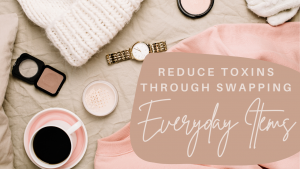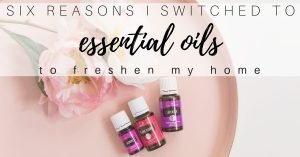When most people ask themselves “how to know if your home is healthy,” the answer usually focuses on surface-level cleanliness—keeping things picked up, vacuuming, or making sure bathrooms sparkle. But the truth is, a home can look spotless and still hide serious health hazards.
Your home should be your sanctuary, yet hidden toxins, moisture problems, and off-gassing materials can quietly impact your health. Fatigue, allergies, poor sleep, and even chronic inflammation are often linked to unhealthy indoor environments.
The key is learning how to spot the invisible issues that many homeowners miss. Let’s break down the most common problem areas and how to begin making your home healthier.
Why a Healthy Home Isn’t Always What It Looks Like
Many of the biggest health stressors inside your home aren’t things you can see right away. They build up slowly, often without warning signs until they’ve already affected your health.
Here are four main categories to consider:
Dust and Allergens in the Home
Where they come from: Dust isn’t just dirt—it’s a cocktail of dead skin cells, fabric fibers, pollen, mold spores, and chemical residues from furniture and cleaning products. Carpets, upholstered furniture, curtains, and bedding all act as reservoirs for these particles (EPA).
How they affect health: Chronic exposure can trigger allergies, asthma, sinus problems, and even weaken your immune system. Dust also binds to harmful chemicals like flame retardants, pesticides, and phthalates, making it more toxic than it seems (NIH Study).
Signs to look for:
- Visible dust buildup on vents, fans, or electronics
- Allergy symptoms that flare indoors
- Worsening asthma or breathing issues
👉 Pro tip: Using a vacuum with a HEPA filter as part of a non-toxic cleaning routine can reduce allergens and chemical residues that hide in dust.
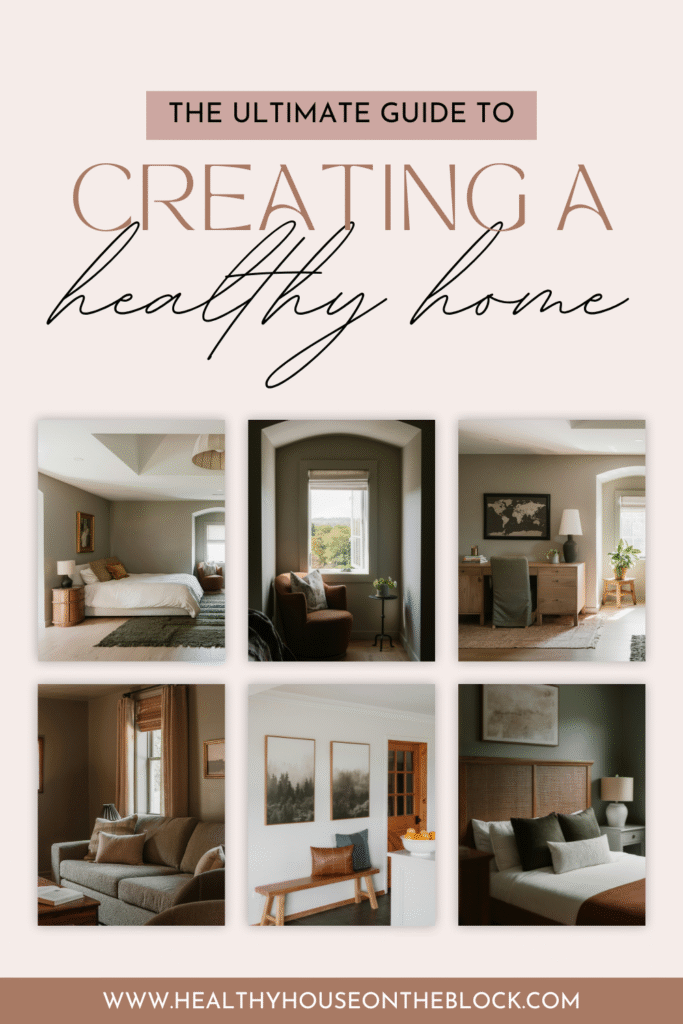
Moisture and Mold in Living Spaces
Where it shows up: Leaks, condensation on windows, poor ventilation in bathrooms, and even damp basements can create the perfect environment for mold growth.
How it impacts health: Mold releases spores and mycotoxins that affect the respiratory system and immune function. For some people, exposure leads to fatigue, brain fog, and skin irritation. Children and anyone with asthma are especially vulnerable (CDC, EPA).
Signs to look for:
- Musty odors
- Water stains on ceilings or walls
- Condensation on windows
- Recurring respiratory symptoms indoors
👉 This is one reason I always emphasize checking for water damage and musty smells in my Healthy House Hunting Checklist.
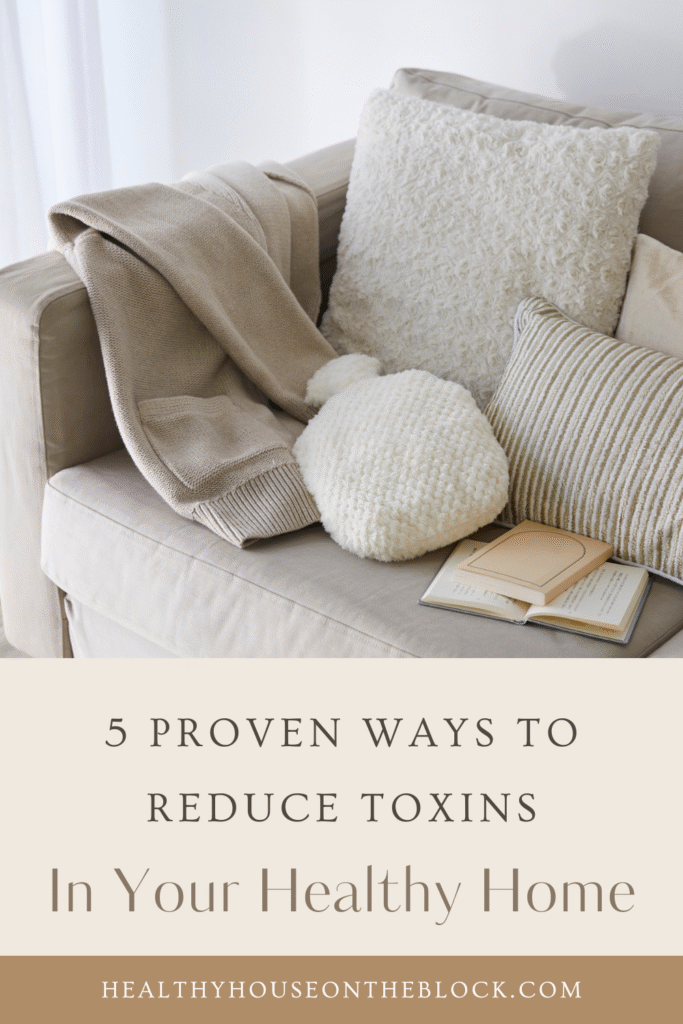
VOCs and Chemical Exposure Indoors
Where they come from: Volatile organic compounds (VOCs) are chemicals released from paints, finishes, cleaning products, air fresheners, plastics, adhesives, and even new furniture. Common VOCs include formaldehyde, benzene, and toluene (EPA).
How they affect health: VOC exposure has been linked to headaches, fatigue, hormone disruption, liver/kidney strain, and even cancer with long-term exposure (American Lung Association).
Signs to look for:
- New furniture smell that lingers
- Headaches or dizziness indoors
- Strong odors from cleaners, candles, or air fresheners
👉 A simple change like swapping out synthetic fragrance products for safer alternatives—or choosing solid wood pieces as I highlight in my non-toxic furniture guide—can significantly lower VOC exposure.
Electronics, EMFs, and Home Health
Where they come from: Wi-Fi routers, cell phones, smart home devices, and charging stations all emit electromagnetic fields (EMFs).
How they affect health: Research is still developing, but EMFs are associated with sleep disruption, headaches, nervous system stress, and fatigue (WHO, NIH Review).
Signs to look for:
- Difficulty falling or staying asleep
- Headaches that ease when away from home
- Reliance on multiple devices in bedrooms
👉 Even simple changes, like moving chargers out of the bedroom, can lower your exposure—a tip I expand on in my 5-Day Home Detox.
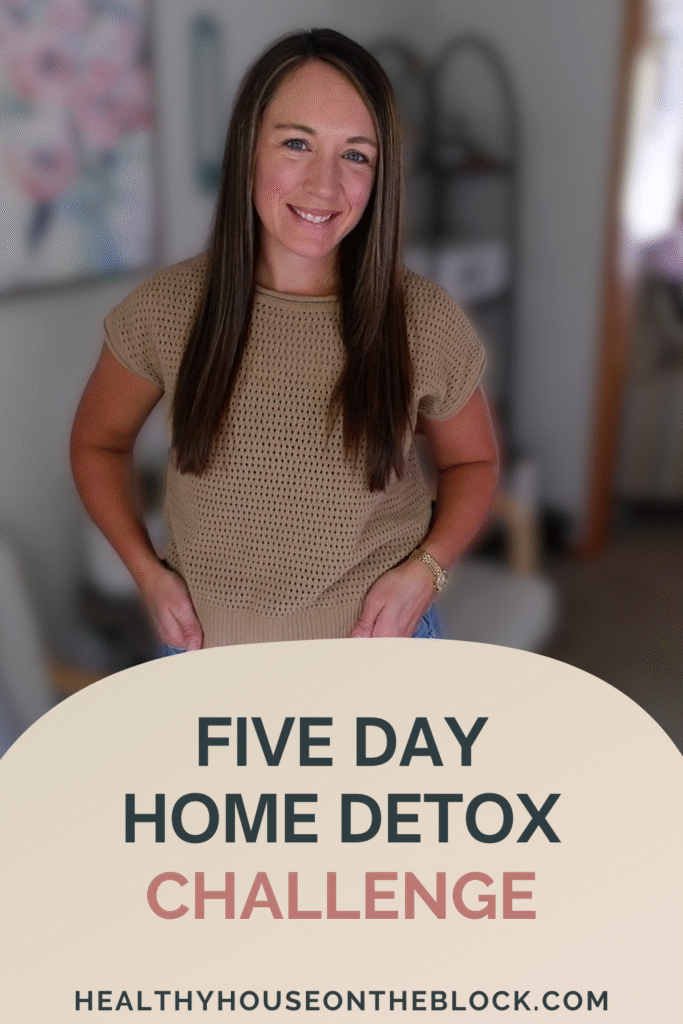
Mini Home Audit: A Simple Way to Check If Your Home Is Healthy
If you want to know if your home is truly healthy, start small. Choose one room—your bedroom is the best place since it’s where your body repairs itself—and run through this checklist:
Dust: Check surfaces, vents, and under the bed. Could you reduce clutter or use a HEPA vacuum?
- Dust is more than just a nuisance. It’s a complex mix of things like pollen, pet dander, mold spores, and even tiny particles from synthetic materials. Many of the chemicals used in our homes, such as flame retardants and phthalates, can bind to dust, which we can then breathe in. This is why it’s so important to address it.
- When you’re auditing your space, notice the dust on surfaces, inside vents, and under furniture. Using a HEPA vacuum is crucial because it traps these tiny particles instead of just stirring them up and redistributing them into the air. You can also dust with a damp cloth to prevent particles from becoming airborne. Reducing clutter also makes it much easier to clean thoroughly.
Moisture: Look for condensation, stains, or musty odors. Would a dehumidifier or better ventilation help?
- Moisture is a key factor in the growth of mold and mildew, which can trigger allergies and other respiratory issues. Mold spores can circulate through the air and land on surfaces, and some types of mold can even release mycotoxins.
- When you check for moisture, look for condensation on windows, peeling paint, or a persistent musty smell. A dehumidifier is a great solution for rooms that feel damp, especially in humid climates. You can also make sure the room is well-ventilated by opening a window or using a fan.
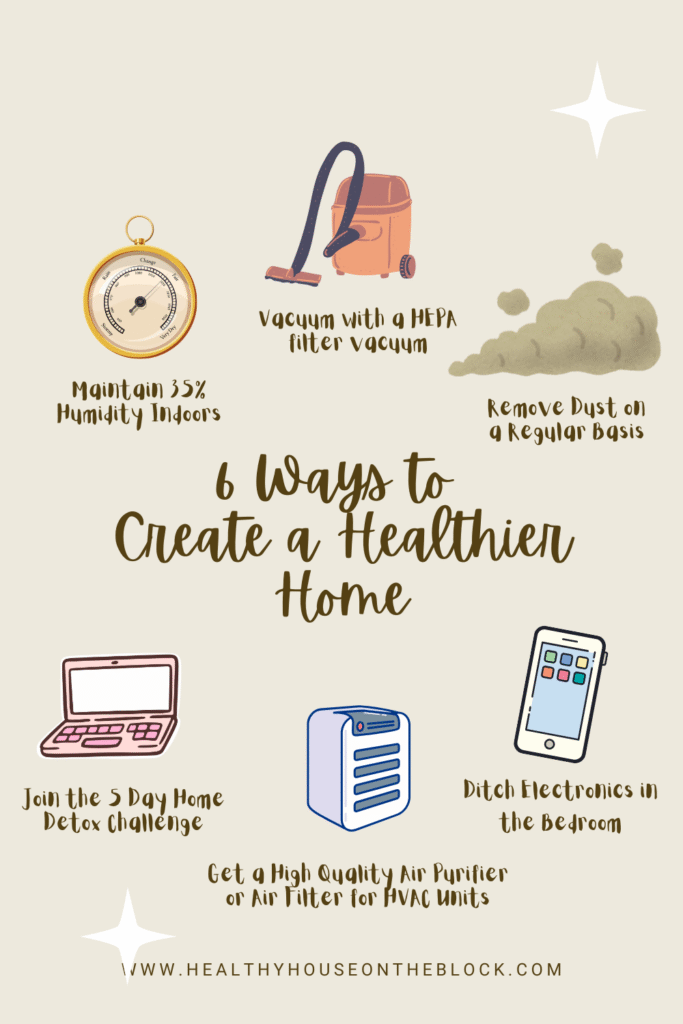
Chemicals: Are there air fresheners, scented candles, or harsh cleaners in this room? Could you replace one with a safer alternative?
- Many common household products, like air fresheners and some cleaning supplies, release volatile organic compounds (VOCs) into the air. These chemicals can impact indoor air quality. Scented products, for example, often use synthetic fragrances that can be endocrine disruptors.
- A simple first step is to check the labels on what you’re already using and start swapping one item at a time. For example, replace a scented candle with a diffuser that uses pure essential oils, or clean with an EWG verified cleaning concentrate like Aspen Clean to naturally reduce products and toxins in one move. Small changes like these can quickly cut down on hidden sources of toxins at home.
Electronics: Are chargers or Wi-Fi devices kept near your bed? Could they be moved or unplugged at night?
- We are constantly surrounded by devices that emit low levels of electromagnetic fields (EMFs). While the science on the long-term health effects is still developing, it’s a good practice to reduce exposure, particularly in the bedroom where the body is meant to rest and regenerate.
- Making small adjustments, like moving alarm clocks and cell phones a few feet from the bed or shutting off the Wi-Fi router overnight, can help create a more restful sleeping space. These simple shifts lower unnecessary exposure and support the bedroom’s role as a true place of restoration.
Even making one or two improvements in this space can significantly reduce the toxin load on your body.
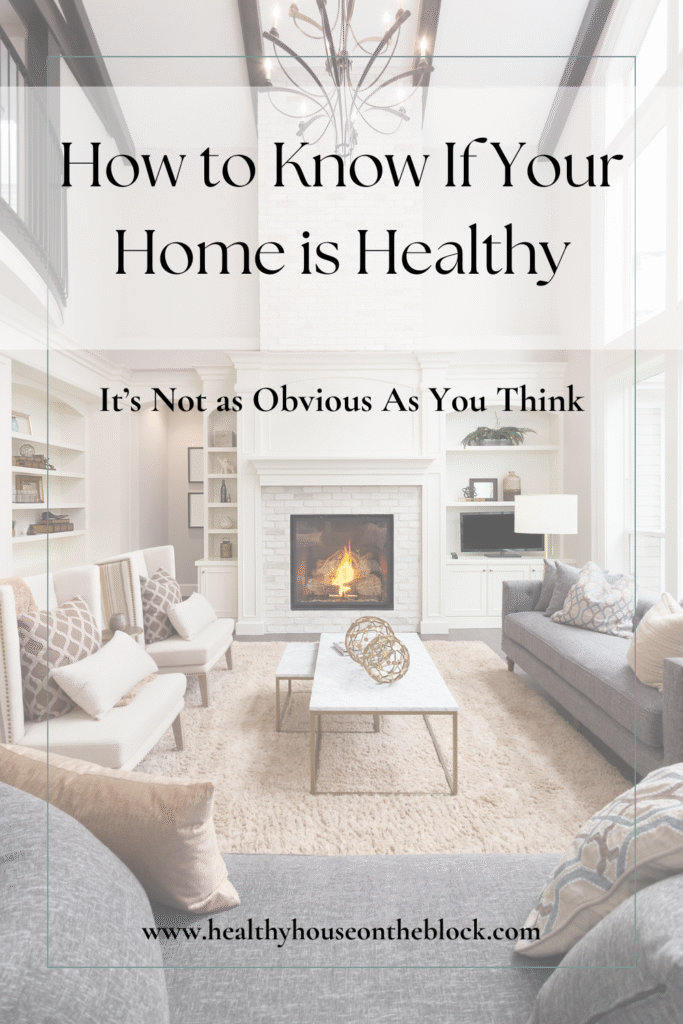
Long-Term Solutions for a Truly Healthy Home
A mini-audit is a great start, but creating a healthier home environment requires ongoing attention. Here’s what you can do to keep your entire house supportive of your health:
- Improve Air Quality: Invest in a HEPA air purifier for bedrooms and living areas. Open windows daily when outdoor air quality is good.
- Even if your home seems clean, the air can be full of invisible pollutants, from pollen and pet dander to mold spores and chemical off-gassing from furniture. While opening windows is a great habit, it’s not always possible, especially during high-pollen seasons or if you live in an urban area.
- This is where a HEPA air purifier can be a game changer. These filters are designed to capture the smallest particles that other filters miss, helping to reduce allergens and pollutants in the air. Placing one in the bedroom is especially helpful since that’s where you spend so many hours each night, and pairing it with a vacuum that uses a HEPA filter can further improve the quality of the air inside your home.
- Filter Your Water: Install a high-quality water filter to reduce chlorine, lead, and other contaminants.
- Our tap water can contain a number of contaminants, including chlorine, lead, and other chemicals. While public water systems are regulated, there can still be concerns about what’s coming through your pipes.
- Filtering your water is one of the simplest ways to cut back on daily toxin exposure. Options range from affordable countertop filters to whole-house systems, and the right choice depends on your water source and budget. Look for filters that are third-party certified so you know they’re truly effective at removing the contaminants that matter most.
Choose Safer Materials: When buying furniture or renovating, look for solid wood, zero-VOC finishes, natural fibers, and water-based adhesives.
- When it’s time to buy new furniture or start a renovation, the materials you choose can have a big impact on your indoor air quality. Many conventional products release VOCs, which are chemicals that can off-gas for months or even years.
- Being intentional with new purchases can make a big difference. Solid wood furniture avoids many of the glues and resins found in particleboard, and natural fabrics like organic cotton, wool, or linen keep unnecessary chemicals out of your space. Choosing zero-VOC paints and water-based finishes will also help maintain cleaner, healthier air in your home.
Switch to Non-Toxic Cleaners: Replace harsh chemical cleaners with simple, effective alternatives like vinegar, baking soda, and plant-based formulas.
- Many common household cleaners contain powerful chemicals that can be irritating to the skin and lungs. You don’t need a cabinet full of different products to have a clean home.
- Instead, a handful of safer options can cover nearly all your cleaning needs. Baking soda and vinegar work well for scrubbing, deodorizing, and general cleaning, while plant-based products from trusted brands are a good fit for anyone who prefers ready-made formulas. With just a few simple swaps, your cleaning routine can become both healthier and more streamlined.
Control Moisture: Keep indoor humidity between 35–40%. Run exhaust fans in kitchens and bathrooms, and fix leaks quickly.
- High humidity creates a perfect environment for mold and dust mites to thrive. Keeping your home’s humidity level in the ideal range of 35-50% is one of the most proactive steps you can take for your family’s health.
- Simple habits can go a long way here. Use exhaust fans when cooking or showering to vent out excess moisture, and don’t ignore small leaks—fixing them right away prevents bigger problems down the road. Maintaining proper humidity not only protects your house but also supports healthier air quality for everyone inside.
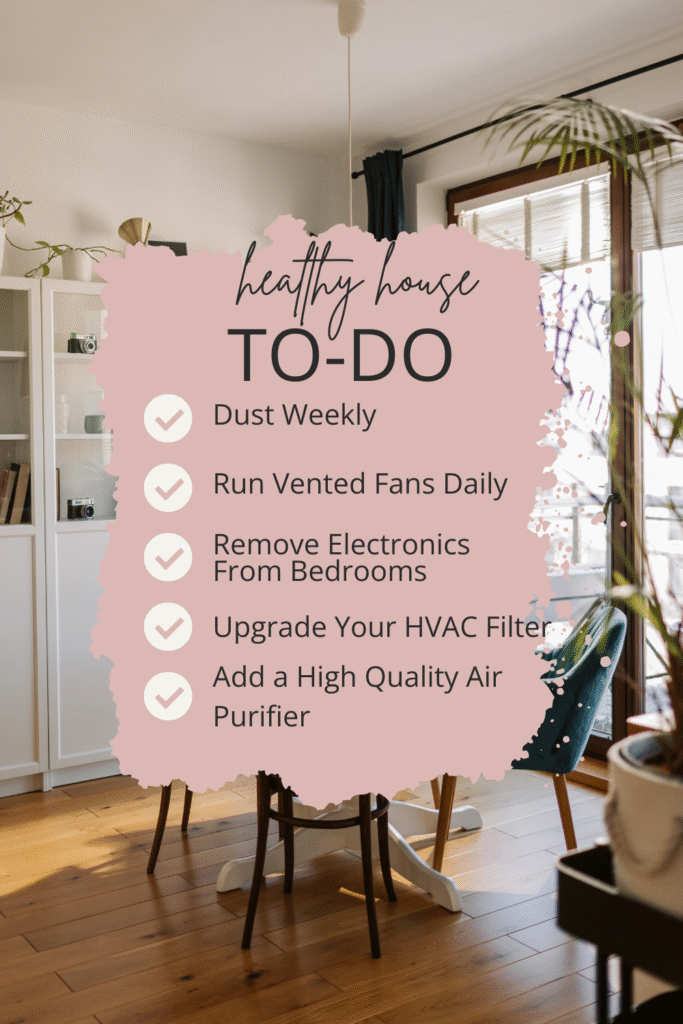
Rethink Electronics: Keep devices out of bedrooms when possible and set Wi-Fi routers on a timer to shut off overnight.
- Just like with the mini-audit, it’s worth taking a bigger look at how electronics are impacting your home. EMFs from devices are everywhere, and while a little exposure is normal, it’s beneficial to reduce it where you can, especially in the places where you spend the most time resting.
- Simple steps—like charging phones outside the bedroom or using a timer to automatically power down the Wi-Fi overnight—help minimize unnecessary exposure. These changes are easy to implement and create a calmer, more restorative space for sleep and recovery.
The Bottom Line: How to Know If Your Home Supports Your Health
When it comes to how to know if your home is healthy, the answer isn’t always obvious. Health hazards can hide in your walls, furniture, and even the air you breathe. The good news is, small, consistent changes can dramatically reduce your exposure to toxins and create a space where your family truly thrives.
If you’re ready to take the guesswork out of it, I’ve created a simple step-by-step guide to walk you through your entire home:
👉 Join the 5-Day Home Detox Here
This free training will help you identify hidden toxins, reduce them in practical ways, and transform your home into a healthy, healing environment—without feeling overwhelmed.
Your home can be your greatest ally in health. You just need the tools to see what’s hiding in plain sight.
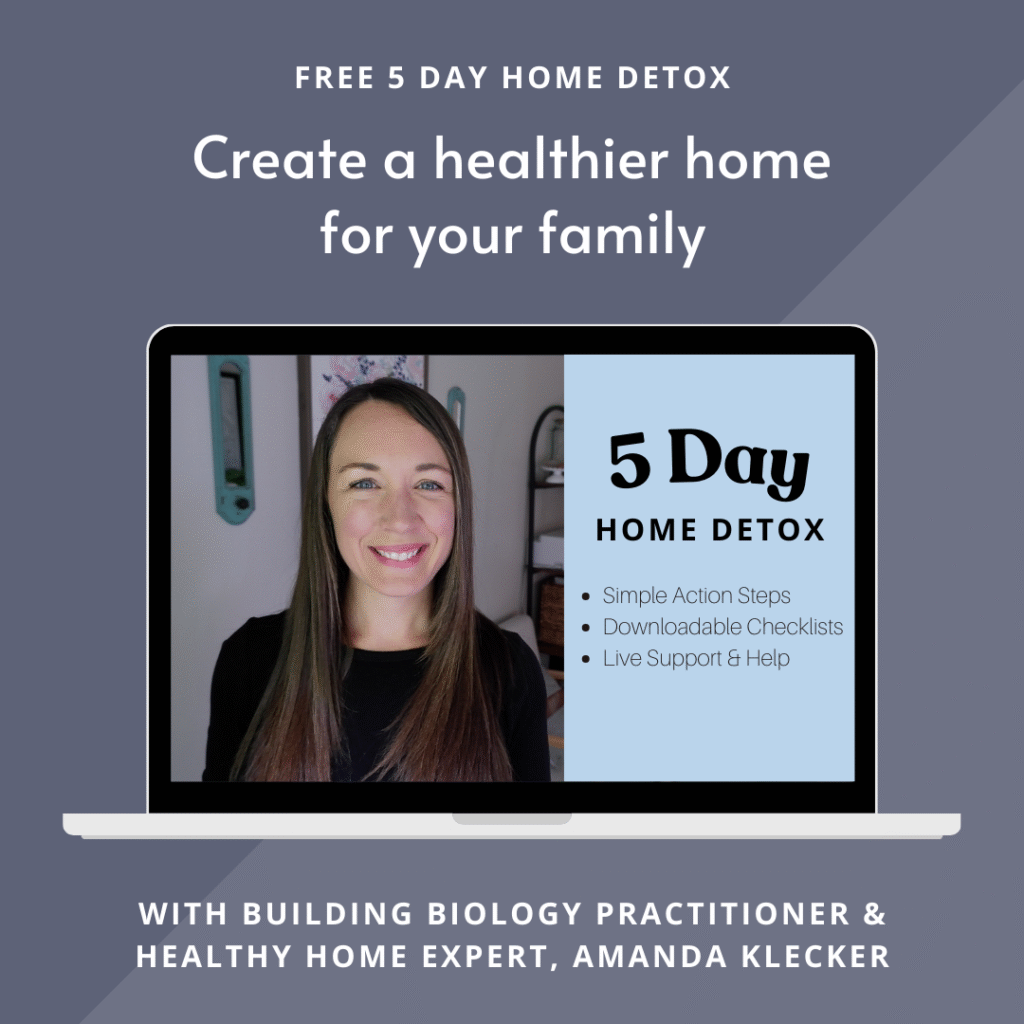
Share this:
- Click to share on Facebook (Opens in new window) Facebook
- Click to share on LinkedIn (Opens in new window) LinkedIn
- Click to share on Reddit (Opens in new window) Reddit
- Click to share on Pinterest (Opens in new window) Pinterest
- Click to print (Opens in new window) Print
- Click to share on X (Opens in new window) X




